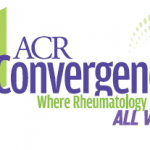The PLASMIC score is an algorithm that can be used to calculate the likelihood of TTP in patients who are awaiting the results of the ADAMTS13 activity level assay. Developed in 2017, the name PLASMIC refers to the score’s seven components: Platelet count; combined hemoLysis variable; absence of Active cancer; absence of Stem-cell or solid-organ transplant; MCV; INR; Creatinine. When applied to the appropriate patient population, the score accurately distinguishes between TMA patients with and without severe ADAMTS13 deficiency (defined as ADAMTS13 activity level ≤10%). It can also be used to judge if the assay should be sent to begin with.
The treatment of acute TTP primarily involves plasma exchange. Caplacizumab, a vWF-directed antibody fragment, is a newer treatment for TTP that can be used as well. Upshaw-Schulman syndrome is a rare autosomal recessive cause of hereditary TTP, and the U.S. Food & Drug Administration recently approved Adzynma (ADAMTS13, recombinant-krhn) for treatment of the condition. This same medication is also being evaluated for the treatment of acute TTP.
For HUS, many clinicians are familiar with Shiga toxin-producing Escherichia coli-associated hemolytic uremic syndrome (STEC-HUS). In contrast to this condition, aHUS is not associated with an underlying infection; rather, this is a complement-mediated process that frequently demonstrates hypocomplementemia and there is often a family history of the condition. Eculizumab and ravulizumab, both of which are inhibitors of C5, have become the standard of care in treatment of complement-mediated HUS.
Diagnosing aHUS with certainty remains challenging because there is no specific test for this condition. When acute aHUS is suspected, the ADAMTS13 activity level assay should be sent to rule out TTP. Ultimately, aHUS is a diagnosis of exclusion.
A number of other conditions can result in TMA. These conditions include the pregnancy-related forms of TMA, such as pre-eclampsia, eclampsia and the HELLP (hemolysis, elevated liver enzymes and low platelets) syndrome. Although these conditions typically improve with delivery of the baby, about one-third of patients can present with TTP in the post-partum period. About 10% of all adult TTP cases are pregnancy-related, and even the first presentation of Upshaw-Schulman syndrome can be with the appearance of TTP in pregnancy.2 HUS can present in the post-partum period.
An important cause of TMA is catastrophic antiphospholipid syndrome (CAPS), which is a rare, life-threatening form of APS that entails severe thrombotic complications (both microvascular and large-vessel thrombosis) that affects multiple organs simultaneously or in a short period of time. Identifying CAPS is important because patients should receive treatment with anticoagulation, corticosteroids and plasma exchange. In some cases, intravenous immunoglobulin (IVIG) and eculizumab may potentially be used as well.

